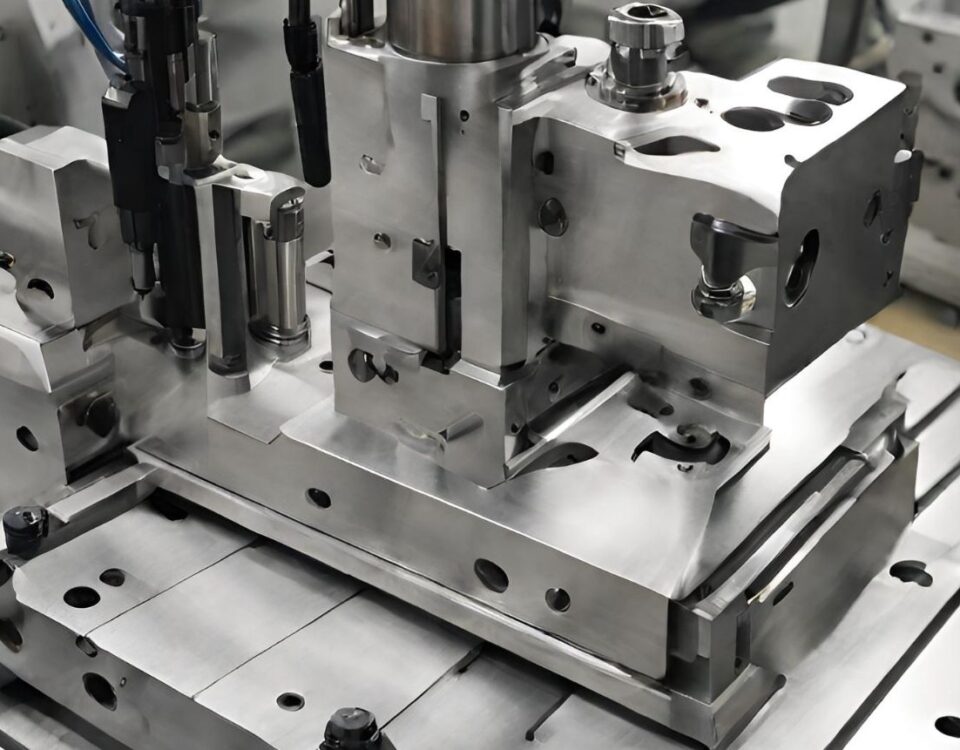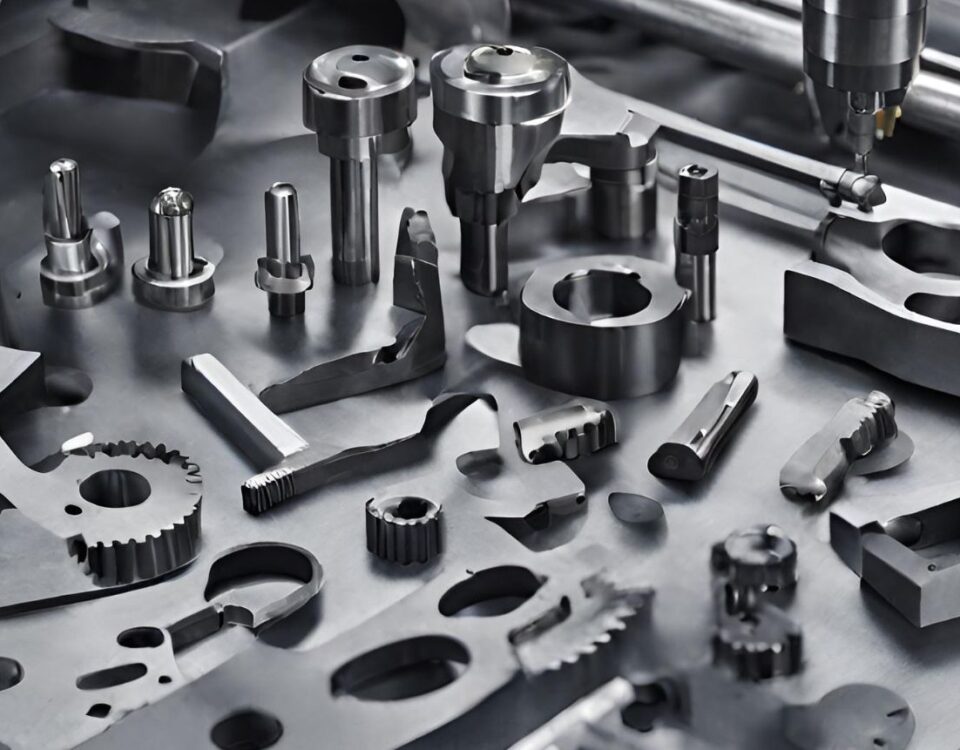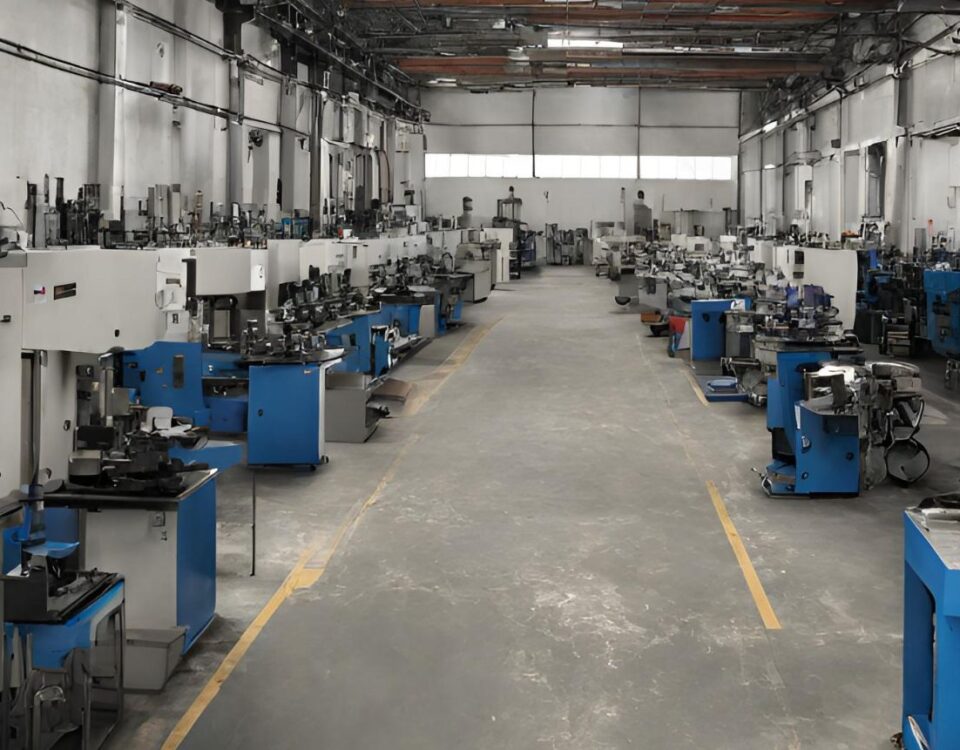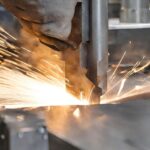
X Ways Custom Metal Fabrication Can Transform Your Business
4 March 2024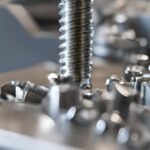
How Can Screw Machining Revolutionize Precision?
7 March 2024Metal stamping is a versatile and cost-effective manufacturing process that plays a crucial role in various industries, from automotive and aerospace to electronics and consumer goods. This comprehensive guide aims to provide a thorough understanding of metal stamping, its applications, benefits, and the factors to consider when choosing the best metal stamping service for your project. Whether you're a seasoned engineer or a newcomer to the world of manufacturing, this guide will equip you with the knowledge needed to make informed decisions and achieve optimal results in your metal stamping endeavors.
Understanding Metal Stamping
Metal stamping, also known as pressworking or pressing, is a manufacturing process that involves shaping metal sheets or coils using specialized dies and presses. It is a highly efficient and cost-effective method for producing large quantities of complex metal components with high precision and repeatability. Metal stamping encompasses a wide range of techniques, including blanking, piercing, bending, forming, embossing, and coining, allowing for the creation of diverse geometries and configurations.
The Metal Stamping Process:
-
Design and Engineering: The metal stamping process begins with the design and engineering phase, where engineers and designers create detailed blueprints and CAD models of the desired parts. Factors such as material selection, part geometry, tolerances, and production volumes are carefully considered during this stage to ensure optimal manufacturability.
-
Tool and Die Design: Once the design is finalized, specialized tooling, including dies and molds, is designed and fabricated to shape the metal sheets according to the desired specifications. Tool and die design is a critical aspect of the metal stamping process, as it directly impacts the quality, accuracy, and efficiency of production.
-
Material Preparation: Metal stamping typically utilizes sheet metal or coil stock as raw materials. These materials are prepared by cutting them into the required sizes and shapes, ensuring they are ready for feeding into the stamping press.
-
Stamping Operation: During the stamping operation, the prepared metal sheets or coils are fed into the stamping press, where they are positioned between the upper and lower dies. The press applies high force to the metal, causing it to deform and take the shape of the dies.
-
Secondary Operations: After the primary stamping operation, additional secondary operations may be performed to further refine the parts, such as trimming, deburring, tapping, welding, or surface treatment processes like painting, plating, or powder coating.
-
Quality Control: Throughout the metal stamping process, stringent quality control measures are implemented to ensure that the finished parts meet the required specifications and standards. This may involve dimensional inspections, visual inspections, and material testing to verify the integrity and quality of the stamped components.
Benefits of Metal Stamping:
-
Cost-Effectiveness: Metal stamping offers significant cost savings compared to other manufacturing processes, especially for high-volume production runs. The ability to stamp multiple parts simultaneously and the efficiency of automated stamping presses contribute to lower production costs per part.
-
High Precision and Accuracy: Metal stamping enables the production of complex parts with tight tolerances and high precision. The use of precision tooling and advanced press technologies ensures consistent quality and dimensional accuracy across large production batches.
-
Versatility: Metal stamping is a versatile process that can accommodate a wide range of materials, including steel, aluminum, copper, brass, and specialty alloys. It is capable of forming intricate shapes, contours, and features, making it suitable for diverse applications across various industries.
-
Rapid Production: Metal stamping offers rapid production capabilities, allowing for quick turnaround times and shorter lead times compared to other manufacturing methods. This agility is especially beneficial for industries with fast-paced production schedules and tight deadlines.
-
Material Efficiency: Metal stamping optimizes material usage by minimizing waste and maximizing the utilization of raw materials. Through careful nesting and layout optimization, manufacturers can achieve high material yield and reduce scrap generation, resulting in cost savings and sustainability benefits.
Steps Involved in the Custom Metal Fabrication Process
The custom metal fabrication process involves several key steps, each playing a crucial role in delivering the final product. Here is an overview of the typical steps involved:
1. Design and Planning: The process begins with a thorough understanding of your requirements. This includes design specifications, material selection, and any additional features or functionality. Working closely with the fabrication provider, you can refine the design and ensure it meets your expectations.
2. Material Selection: Once the design is finalized, the appropriate material is chosen based on factors such as strength, durability, and aesthetic appeal. The provider may offer guidance on the best material for your specific application.
3. Cutting and Shaping: The chosen material is then cut and shaped according to the design specifications. This can involve various techniques such as laser cutting, waterjet cutting, or shearing.
4. Forming and Bending: In this step, the metal is shaped into the desired form. Techniques such as bending, rolling, or stamping may be used to achieve the desired shape and dimensions.
5. Welding and Joining: If the design requires multiple components to be joined together, welding or other joining techniques are employed. This ensures structural integrity and durability.
6. Finishing and Surface Treatment: The fabricated metal components undergo finishing processes to enhance their appearance and protect against corrosion. This can include grinding, polishing, painting, or powder coating.
7. Quality Control and Inspection: Before the final product is delivered, it undergoes rigorous quality control and inspection to ensure it meets the specified requirements. This includes dimensional checks, visual inspections, and testing if necessary.
8. Delivery and Installation: Once the product passes inspection, it is carefully packaged and delivered to your location. Depending on the nature of the project, the provider may also offer installation services.
By understanding the steps involved in the custom metal fabrication process, you can better appreciate the complexity and precision required to deliver high-quality products.
Choosing the Best Metal Stamping Service:
-
Expertise and Experience: When selecting a metal stamping service provider, consider their expertise and experience in the field. Look for companies with a proven track record of delivering high-quality stamped components and a deep understanding of your specific industry requirements.
-
Capabilities and Equipment: Assess the capabilities and equipment of the metal stamping service provider to ensure they can handle your project requirements. Consider factors such as press tonnage, bed size, speed, and automation capabilities to determine if they can accommodate your production volumes and part complexities.
-
Quality Assurance: Quality assurance is paramount in metal stamping to ensure the integrity and reliability of the stamped components. Choose a service provider that has robust quality control processes in place, including inspection protocols, traceability measures, and certifications such as ISO 9001 or AS9100.
-
Material Selection and Expertise: Different metals and alloys have unique properties and characteristics that impact the stamping process. Choose a metal stamping service provider with expertise in material selection and processing to help you choose the most suitable materials for your application and ensure optimal performance and durability.
-
Customization and Flexibility: Opt for a metal stamping service provider that offers customization and flexibility to accommodate your specific project requirements. Whether it's custom tooling, secondary operations, or value-added services, choose a partner who can tailor their solutions to meet your unique needs and specifications.
-
Customer Support and Communication: Effective communication and responsive customer support are essential for a successful metal stamping project. Choose a service provider that values collaboration and maintains open lines of communication throughout the project lifecycle, from initial consultation to post-production support.
Conclusion
Metal stamping is a highly versatile and cost-effective manufacturing process that offers numerous benefits for producing complex metal components with precision and efficiency. By understanding the fundamentals of metal stamping and selecting the right service provider, you can ensure the success of your project and achieve optimal results. Whether you're in the automotive, aerospace, electronics, or consumer goods industry, metal stamping offers a reliable solution for meeting your production needs and driving innovation in your products. With the insights and considerations outlined in this guide, you can confidently navigate the world of metal stamping and choose the best metal stamping service for your project.


